Sulphates: Barite
 Diagnostic card.
Diagnostic card.
Ba SO 4
Diamond orthogonality
Specific weight 4.48
Cleavage is perfect
Cracked shell
Color is colorless, differently colored
Color in powder white
Glitter from glass to pearly
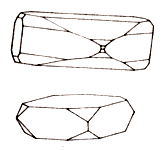
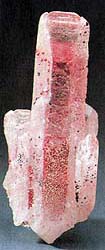 Barite is rarely represented by isolated crystals. Often encountered, very rich in facets, barite crystals have a prismatic appearance with a characteristic ending in the form of a "cutter". Usually they are transparent and colorless, but can also be white or colored in a variety of colors (typical honey-yellow, pink and sky-blue). Rarely do independent crystals exist; Much more often they are united in druses, sometimes truly magnificent.
Barite is rarely represented by isolated crystals. Often encountered, very rich in facets, barite crystals have a prismatic appearance with a characteristic ending in the form of a "cutter". Usually they are transparent and colorless, but can also be white or colored in a variety of colors (typical honey-yellow, pink and sky-blue). Rarely do independent crystals exist; Much more often they are united in druses, sometimes truly magnificent.
The main ore of barium; Filler in rubber and paper industry; Weighting agent when drilling, etc. Shape of crystals. Often there are beautiful multi-faceted crystals; Mostly tabular, rarely prismatic crystals. Crystal structure. Anionic complex [SO4] 2 - with Ba. Class of symmetry. Rhombo-bipyramidal - mmm. Cleavage. Perfect (from the cleavage of calcite differs by a right angle between planes); The mineral forms a spaying path in the rhombic prism. Aggregates. Granular, radiant, dense, kidney-shaped, platy, continuous.
Diagnostic signs.
The perfect cleavage in the parallelepiped, insolubility and lack of effervescence upon contact with acids, most importantly, a large weight allow us to quickly recognize barite. It has a glass shine with a tendency to pearly and is easily scratched by a knife. It cracks and melts only along the edges of fine fragments, staining the flame in a yellow-green color (characteristic of barium). In powdered form, it slowly dissolves in concentrated sulfuric acid; From the addition of water, the solution becomes turbid due to the precipitation of BaSO4.
Origin.
Barite is found mainly in hydrothermal deposits, either barite proper, or containing barite in the vein, in which it forms an association with ore sulfates. This mineral can also be present in veins and voids among limestones and dolomites. Usually barite forms large dense or granular opaque white clusters.
Place of Birth.
The main deposits within Italy, where industrial barite is mined, are located in the areas of Trentino-Alto-Adige (Darso mine) and Sardinia. In the past barite was developed on an industrial scale in Walsasin (Cortabbio, Como province), in the foothills of the Alps in the provinces of Bergamo, Brescia and Venice. Druses and gorgeous crystals were found in the Brosso and Traversella mines in the Piedmont region and in the Pergine-Vetriolo zone in Trentino. Large yellow crystals came from the Barega mine near Nixus (Sardinia). Elsewhere in this island, there were elegant crystal druses, sometimes slightly bluish, which are highly valued by collectors. Barite reserves are contained in the veins of vein, stratiform and residual types. About 55% of confirmed reserves abroad are concentrated in vein deposits. The world's leading producers of barite are China, the United States, India and Kazakhstan.
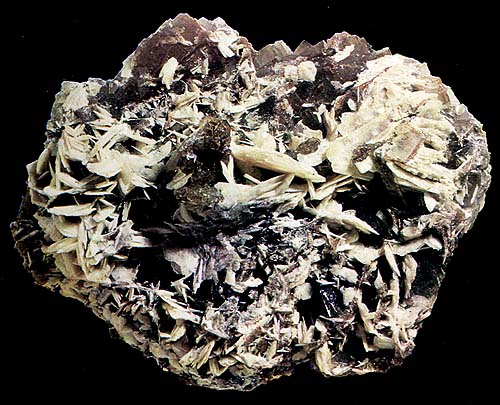
Application.
Barite is the main mineral raw material for obtaining barium. Grinded barite is used as a pigment in the paper industry and for the manufacture of paints, as well as a weighting agent for clay drilling fluids used in the drilling of oil wells. Barium sulphate is used in medicine as a diagnostic tool for radiographic examination of the digestive tract. The main technological properties that determine the wide range of industrial barite use are high density, chemical inertness, low hardness (low abrasiveness), the ability to absorb X-rays, high barium content, whiteness.
Barium is an element of the main subgroup of the second group, the sixth period of the periodic system of chemical elements, with atomic number 56. Denoted by the symbol Ba (Latin Barium). A simple substance of barium is a soft, malleable alkaline earth metal of a silvery white color. Has a high chemical activity. In nature it is not found in native form.


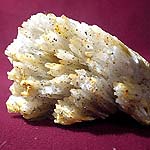
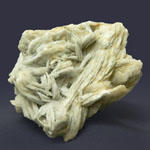
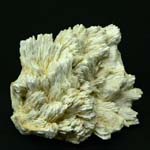
Barite, or heavy spar - barium sulfate. Glitter pearl to glass. Transparent to translucent. Colors: grayish-white, yellow, pink; Less often it is colorless, water-transparent. The line is white. The fracture is uneven, stepped. It's fragile. Cleavage is perfect. Stains the flame in green. It is formed in hydrothermal ore veins. Crystals (rhombic syngony) are tabular, columnar, leafy (in this case they often grow into rosettes - "barite roses").
Along with this, solid masses are typical - granular, dense, draining. It is used as a weighting agent for drilling fluids, in medicine, as well as for protection from radiation, as a filler and as a polishing agent. Location: North Rhine-Westphalia, Harz, Schwarzwald, Odenwald (Germany), Harz (Germany), Carinthia (Austria), Switzerland, England, USA, CIS.
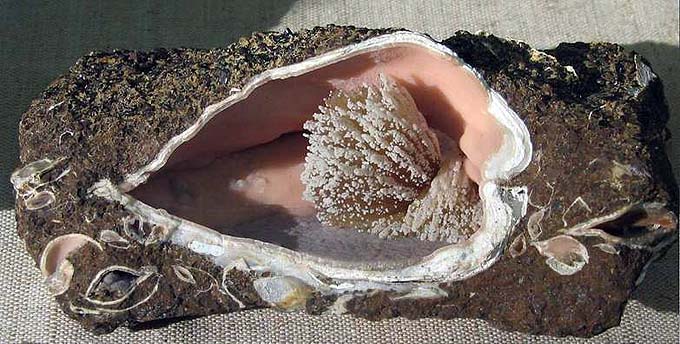
Barite, calcium rhodochrosite in the shell, in limonite. Quarry "E", Kerch mine. Shell 7x5 cm. Photo: © А.А. Evseev.
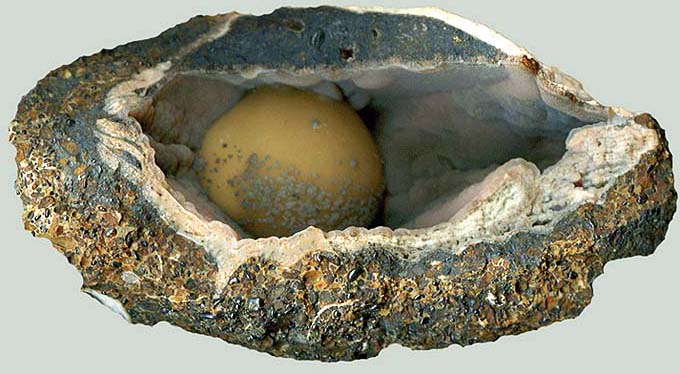
Barite. Spherolite (2.5 cm) in the shell (Ca-rhodochrosite). Kerch. The 1980s. Photo: © В.А. Sleetov
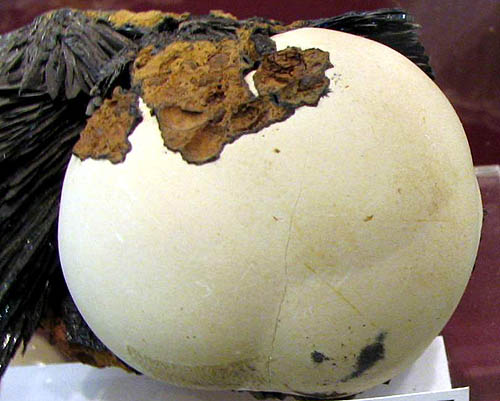
Barit, Vivianite. Kerch mine, Crimea, Ukraine. Photo: © А.А. Evseev.
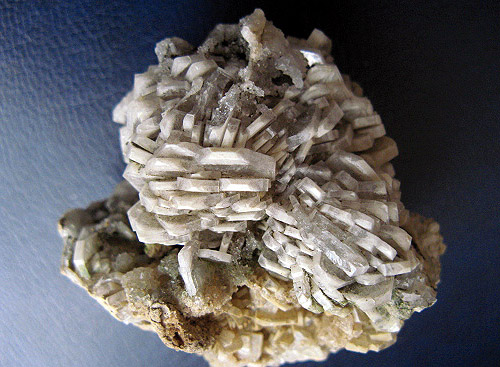
Barite, Seversk, Donbass, southeast of Ukraine, the CIS. (September 23, 2012, 09:51).

Barite (light), fluorite (violet). Berbes, Asturias, Spain
Barium is necessary: with ischemic heart disease, chronic coronary insufficiency, diseases of the digestive system. Produces a sealing effect on the tissue, and this action is used to treat hypertrophied glands. Homeopaths recommend taking barium carbonate for elderly people suffering from obesity, when there are symptoms of cerebral sclerosis, as well as cardiovascular diseases (hypertension, aortitis, aneurysms), respiratory diseases (adenoids, chronic tonsillitis, bronchitis, recurrent tonsillitis) and digestive Tract (gastritis, flatulence, diarrhea, constipation).
Food sources of barium: marine inhabitants are able to accumulate barium from the surrounding water, and in concentrations of 7-100 (and for some marine plants - up to 1000) times exceeding its content in seawater (laminaria). It has been established that in case of coronary heart disease, chronic coronary insufficiency, diseases of the digestive organs, the content of barium in tissues decreases. The content of barium in the human body is about 20 mg.
Symptoms of poisoning with barium are similar. Hypertension, premature contractions of the ventricles of the heart, ventricular tachycardia, ventricular fibrillation and asystole. There is an outflow from the eyes, mydriasis, salivation, nausea, vomiting. Soreness of the abdominal wall, diarrhea, violation of the act of swallowing. Muscle fibrillation, rapid breathing, pulmonary edema, tonic, clonic convulsions, and paralysis. Hypokalemia and hypophosphatemia, metabolic acidosis and hypoglycemia. Barium is considered a toxic trace element, but is not considered mutagenic or carcinogenic.
The main manifestations of excess barium: muscle spasms, disorders of coordination of movements and brain activity; Abundant salivation, nausea, vomiting, colic, diarrhea, dizziness, tinnitus, pale skin, abundant cold sweat; Weakness of the pulse, bradycardia, extrasystole. Even in negligible concentrations, barium exerts a pronounced effect on smooth muscles (in small concentrations it relaxes them, causes a reduction in large ones). Barium compounds reduce the permeability of potassium channels.
ADR 4.3


Substances that emit flammable gases in contact with water
Risk of fire and explosion if exposed to water.
The cargo, which crumbled, must be covered and kept dry
Blue and blue diamond, ADR number, black or white flame
ADR 5.1

Substances that are oxidized
Risk of violent reaction, ignition or explosion if exposed to flammable or flammable substances
Do not allow the formation of a mixture of cargo with flammable or combustible substances (eg sawdust)
Yellow diamond, ADR number, black flame above the circle
ADR 6.1

Toxic substances (poison)
Risk of poisoning by inhalation, in contact with skin or if swallowed. Dangerous to aquatic environment or sewer system
Use a mask for emergency leaving the vehicle
White diamond, ADR number, black skull and crossbones
ADR 8

Corrosive (corrosive) substances
Risk of burns from skin corrosion. They can react violently with each other (components), with water and other substances. The substance that spilled / crumbled can emit a corrosive vapor.
Dangerous to aquatic environment or sewer system
White upper half of diamond, black - lower, equal, ADR number, test tubes, hands
ADR 1

The bomb that explodes
They can be characterized by a number of properties and effects, such as: critical mass; Scatter of fragments; Intensive fire / heat flow; bright flash; Loud noise or smoke.
Sensitivity to shocks and / or impacts and / or heat
Use the shelter, while keeping a safe distance from windows
Orange sign, the image of a bomb in the explosion
ADR 4.2

Substances that are capable of self-ignition
The risk of a fire resulting from spontaneous combustion in the event that the packaging is damaged or the source of the content has occurred.
Can react violently with water
White upper half of diamond, red - lower, equal, ADR number, black flame
| The name of a cargo that is particularly dangerous for transportation | room
UN |
Class
ADR |
| BARIUM | 1400 | 4.3 |
| Barium nitrate BARIUM NITRATE | 1446 | 5.1. |
| Barium bromide barium bromide | 1564 | 6.1. |
| Barium Bromium barium Bromate | 2719 | 5.1. |
| Barium carbonate Barium carbonate | 1564 | 6.1. |
| Barium dichromate Barium dichromate | 3087 | 5.1. |
| Barium manganese beryllium BARIA PERMANGANATE | 1448 | 5.1. |
| Barium sulfuric Barium sulphide | 1564 | 6.1. |
| Barium chloride Chloride chloride | 1564 | 6.1. |
| BARIA AZIDE DILUTED with a mass fraction of water not less than 50% | 1571 | 4.1 |
| BARIA AZIDE dry or moistened with a mass fraction of water less than 50% | 0224 | 1 |
| BARYA BROMATE | 2719 | 5.1. |
| Barium bromate monohydrate BARIA BROMATE | 2719 | 5.1. |
| Barium bromide | 1564 | 6.1. |
| Barium Hydrate Oxide Barium Hydroxide | 2923 | 8 |
| Barium hydride | 3134 | 4.3 |
| Barium hydroxide | 2923 | 8 |
| BARYA HYPOCHLORITE, which contains more than 22% of active chlorine | 2741 | 5.1. |
| Barium dichromate | 3087 | 5.1. |
| Barium carbonate | 1564 | 6.1. |
| BARIUM NITRATE | 1446 | 5.1. |
| BARY OXIDE | 1884 | 6.1. |
| BARIA PERMANGANATE | 1448 | 5.1. |
| BARIA PEROXIDE (peroxide) | 1449 | 5.1. |
| BARIA PERCHLORAT SOLID | 1447 | 5.1. |
| BARIA PERCHLORATE SOLUTION | 3406 | 5.1. |
| Barium alloys are non-pyrophoric solid toxic, which react dangerously with water | 3134 | 4.3 |
| BARIUM ALLOYS PYROPHORIC | 1854 | 4.2 |
| BARIYA CONNECTION, NZK | 1564 | 6.1. |
| Barium sulfide | 1564 | 6.1. |
| BARIUM CHLORATES SOLID | 1445 | 5.1. |
| BARIUM CHLORATE SOLUTION | 3405 | 5.1. |
| Barium chloride | 1564 | 6.1. |
| Barium chloride | 1564 | 6.1. |
| Barium chloride, solution | 3287 | 6.1. |
| Barium chromate | 1564 | 6.1. |
| BARY CYANID | 1565 | 6.1. |
- Ghetchellit - "New Almaden blend" - arsenide and antimony sulfide (modern sulfosol)
- Antimony is a toxic metal (semimetal) , widely used in metallurgy, medicine and engineering
- Zirconium - a rare and undiscovered metal and the most dangerous precious stone in oxide and salt
- Gold - yellow dangerous and poisonous metal of modern accurate digital and cable technologies
- Sulfur is a golden-yellow toxic substance and a sign of active volcanic activity
- Cadmium is an undisputed toxic silvery metal unknown to a wide range of people
- Lead - a toxic gray imitator of metallic silver and toxic metal blende
- Arsenic is a classic poison of medieval and modern poisoners and medicine in medicine
Poisonous and radioactive dangerous stones and minerals
** - poisonous stones and minerals (mandatory check in the chemical laboratory + explicit indication of toxicity)
** - radioactive stones and minerals (mandatory check on the standard dosimeter + ban on open sales in case of radioactivity exceeding 24 milli / g / h + additional measures of population protection)
Catalog of minerals and semi-precious stones of the world by groups
** - poisonous stones and minerals
** - radioactive stones and minerals


Comments
When commenting on, remember that the content and tone of your message can hurt the feelings of real people, show respect and tolerance to your interlocutors even if you do not share their opinion, your behavior in the conditions of freedom of expression and anonymity provided by the Internet, changes Not only virtual, but also the real world. All comments are hidden from the index, spam is controlled.